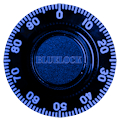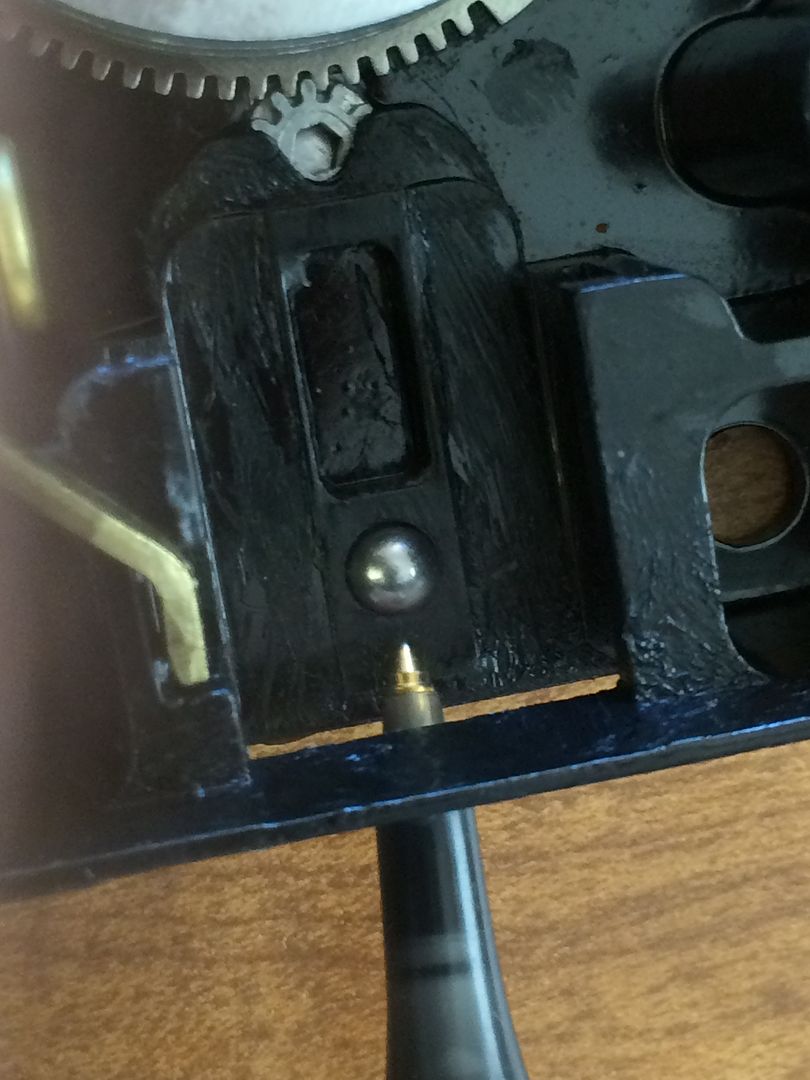|
Forgot how to dial the combination on that old safe? Think you got the right numbers but the handle is stuck? What safe should you buy? Ask your safe questions here!
Forum rules
You are posting this in This Old Safe, a public area of the forum.
Safe manipulation discussion is allowed, but safe drilling or other destructive entry is only allowed in the Advanced - Safes and Safe Locks area.
If you are a guest of the forum and have a safe you need to open, but you do not have the combination, we cannot tell you how or where to drill it.
 by sign216 » 6 Feb 2023 17:03 by sign216 » 6 Feb 2023 17:03
Will it foul the mechanism, preventing the fence from dropping, if anything is touching a bolt? Situation - vintage Subway safe with LaGard / Intersec lock. On the bench, the combo works fine. Sitting in a box, prepped for shipping, combo doesn't work. It seems that in the box, the packing material presses on the bolts, preventing the mechanism from unlocking. It's not jammed, but the mechanism doesn't unlock, and the dial just keeps moving on. I can reproduce the problem on the bench, by pressing on a bolt, even if just tangentially, while dialing the combo. If a bolt is pressed, the combo won't unlock and dial continues to turn. The issue is that in a mounting body in a floor, or a wall, it's easy for a bolt to touch the mounting body, preventing the safe from unlocking. What's going on here?   
-
sign216
-
- Posts: 212
- Joined: 5 Feb 2019 6:54
- Location: Massachusetts
 by MartinHewitt » 6 Feb 2023 17:20 by MartinHewitt » 6 Feb 2023 17:20
Does this work like the Major round doors? There is the lever connected to one bolt. If this bolt is pushed in the head of the lever is pushed to a pin (lever stop). This may result in the lever hanging there. In the photos of Major doors it looks like there is a tube around this pin, probably to prevent the lever hanging there.
-
MartinHewitt
-
- Posts: 935
- Joined: 16 Nov 2016 18:11
 by sign216 » 6 Feb 2023 17:32 by sign216 » 6 Feb 2023 17:32
Martin, I checked the back, and the bolts don't have much leeway to move at all. I can't imagine that pressing on them is causing a problem, but yet it does. Any insights? Joe 
-
sign216
-
- Posts: 212
- Joined: 5 Feb 2019 6:54
- Location: Massachusetts
 by MartinHewitt » 6 Feb 2023 18:57 by MartinHewitt » 6 Feb 2023 18:57
It is a similar situation with the bolts connected to the lock bolt. Pushing the right bolt (or even all bolts) pushes back the lock bolt, pushing back the lever, pushing its head to the lever stop. I would have guessed it to need a higher force to get this result.
Another idea: The bolt has a detent ball which hold the lever slightly away from the lever stop. With pressure the lever moves towards the stop thereby shifting the fence a bit to the right. If the fence can barely get into the gates at the normal position it will not get into the gates when shifted. You could try dialling the combo with all numbers minus 1. Or you could try dialling the combo with an open lock and observe the location of the gates and how it shifts with pressure.
-
MartinHewitt
-
- Posts: 935
- Joined: 16 Nov 2016 18:11
 by sign216 » 6 Feb 2023 19:19 by sign216 » 6 Feb 2023 19:19
Ok, let me chew on this, and see what goes on with the back off, and or w trying the combo -1, or w an open lock.
Have you experienced this before?
-
sign216
-
- Posts: 212
- Joined: 5 Feb 2019 6:54
- Location: Massachusetts
 by MartinHewitt » 7 Feb 2023 4:46 by MartinHewitt » 7 Feb 2023 4:46
Usually it is not a good idea to have force on the lock bolt while opening and closing, esp. on electronic locks. So it should be avoided if possible. I have noticed on my safe's combination lock, that it can't be opened again directly after closing because of the detent. When closing the fence jumps out of the gates as soon as the lever stop allows the lever head to go up. Then the detent pulls the bolt and lever away from the stop and the fence is not anymore fully over the gates. If I push the bolt in slightly the lever drops. Best practice for setting a combination is to check afterwards each number +/- 0.5 or so. This is to ensure that the user can make on all wheels a slight error in both directions with the lock still opening. Depending on how far the lock bolt is pushed in the proper setting of the combo might help.
Btw. I do think your door was made by Intersec.
PS: Be careful with the relocker. From the photo I think there is an arm screwed to the cover that pushes the sprung sheet on the rear of the lock back, so it doesn't interfere with the bolt work bar behind the lock.
-
MartinHewitt
-
- Posts: 935
- Joined: 16 Nov 2016 18:11
 by sign216 » 7 Feb 2023 7:19 by sign216 » 7 Feb 2023 7:19
I can understand that force on the bolts is not good, but here it's "not force" but just a moderate pressure that can throw it off. I can imagine in a wall or floor setting one of the bolts touching the mount, and if that throws the lock off then it's a disaster.
Later today I'll open it up and see if it can be helped, but when I opened it up originally everything looked pristine, so perhaps it's a design flaw?
Joe
-
sign216
-
- Posts: 212
- Joined: 5 Feb 2019 6:54
- Location: Massachusetts
 by MartinHewitt » 7 Feb 2023 8:19 by MartinHewitt » 7 Feb 2023 8:19
Having a direct connection between bolt work and lock bolt is not the best design. There isn't much space in that door, so there isn't much of an alternative. But if the safe is designed properly there isn't any force (small or large) on the door bolt.
-
MartinHewitt
-
- Posts: 935
- Joined: 16 Nov 2016 18:11
 by sign216 » 7 Feb 2023 12:58 by sign216 » 7 Feb 2023 12:58
The issue is that when any bolt is pressed in-ward, the pressure is transmitted to the lever, pressing it's tip to a projection in the lock body (see tip of green arrow). In the photo the gates are lined up for the lever fence to drop, but it doesn't because I'm pressing on a bolt, outside of the photo. Is it design or happenstance? There's a lug at lever tip, almost like it's designed to hit the lock body projection. I'm tempted to file away the tip of the lever, but am fearful of unknown aftereffects. Moly lube at the lever tip helped, but the issue remains. So...for the lock to work, there can be no in-ward pressure on the bolts. Joe 
-
sign216
-
- Posts: 212
- Joined: 5 Feb 2019 6:54
- Location: Massachusetts
 by MartinHewitt » 7 Feb 2023 14:09 by MartinHewitt » 7 Feb 2023 14:09
If you remove the lug you can open the safe just by pushing the bolt.
In the safe body, there is nothing soft, just steel. The difference between "no force on the bolt end" and "doesn't close" is probably half a millimetre. So there is more space to not come into the "doesn't close" range.
-
MartinHewitt
-
- Posts: 935
- Joined: 16 Nov 2016 18:11
 by BlueLock » 7 Feb 2023 15:33 by BlueLock » 7 Feb 2023 15:33
Does your brass bolt in the lock have a ball detent underneath? I think that feature is there to help prevent the binding you are seeing if the external bolts were "slightly" pushed in. Of course, I have no idea which models do or do not have said detent in place. 
-

BlueLock
-
- Posts: 72
- Joined: 7 Mar 2017 3:42
- Location: Southern California
 by sign216 » 7 Feb 2023 15:53 by sign216 » 7 Feb 2023 15:53
BlueLock wrote:Does your brass bolt in the lock have a ball detent underneath? I think that feature is there to help prevent the binding you are seeing if the external bolts were "slightly" pushed in. Of course, I have no idea which models do or do not have said detent in place. 
Is that ball detent in the block, under the lever's big brass screw?
-
sign216
-
- Posts: 212
- Joined: 5 Feb 2019 6:54
- Location: Massachusetts
 by BlueLock » 7 Feb 2023 16:00 by BlueLock » 7 Feb 2023 16:00
Yes. In that random LaGard picture I posted, it is indeed under the block with the big screw that attaches the lever.
-

BlueLock
-
- Posts: 72
- Joined: 7 Mar 2017 3:42
- Location: Southern California
 by MartinHewitt » 7 Feb 2023 16:33 by MartinHewitt » 7 Feb 2023 16:33
It is on the underside of the bolt. To see it, you need to remove the lock bolt and for this remove the lever. In Gordon's thread viewtopic.php?f=36&t=62460 about the S&G are nice photos of the ball detent there. 
-
MartinHewitt
-
- Posts: 935
- Joined: 16 Nov 2016 18:11
 by sign216 » 7 Feb 2023 17:35 by sign216 » 7 Feb 2023 17:35
There is no ball bearing in my unit. Oddly, that big brass screw isn't slotted to take a screwdriver. It has a semi-circular cut, to take a coin. The last time I saw that was in a 1903 Winchester single-shot .22 rifle, made so those mule farmers could take apart their rifles with a coin, since they weren't mechanical in that era.
Also, although the lock was pristine, the big screw was slightly marred, like someone had been in there before. Idk if the bearing got lost, or was never there in this early model, or what.
I think this closes it, although I had never known the sensitivity these units had to bolt tension preventing the lock from opening. Interesting. Something to keep in mind. Thanks to the forum for informing me on this.
Joe
-
sign216
-
- Posts: 212
- Joined: 5 Feb 2019 6:54
- Location: Massachusetts
Return to This Old Safe
Who is online
Users browsing this forum: No registered users and 1 guest
|










